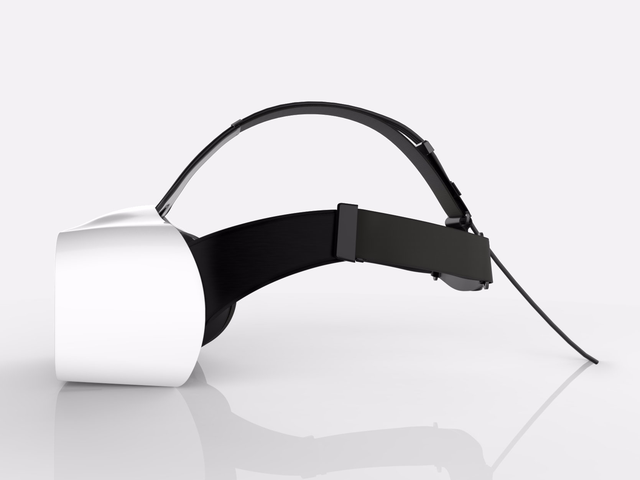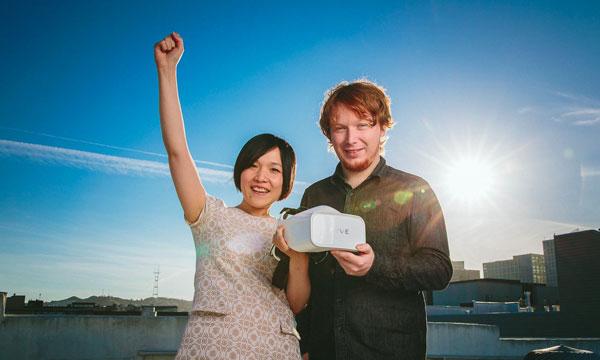There have been some VR helmets in the market, most of which are developed by big companies. For example, Facebook developed Oculus Rift and Sony made PlayStation VR. In Tokyo, there is a small business Fove, which was created by former Sony game designers Yuka Kojima and Lochlainn Wilson. Fove tried to challenge high-end helmets. The Fove VR helmet also used a technology that other companies did not use.

In the coming months, the Fove helmet will be shipped, priced at $599, and requires a powerful Windows computer for play. If you want one, you can book and the product will be shipped in the next few months, depending on Foxconn's production capacity.

Fove has an important function: eye tracking, it is this technology that makes Fove become competitors of Oculus and HTC. Currently, commercial and on-sale VR helmets do not use this technology. Competitors have quickly caught up. For example, last month Google acquired an eye tracking startup company and spent 20 million US dollars.
"When I was working at Sony Entertainment, there was one thing I was interested in: Bringing more human reactions and emotional reactions into video games." Kojima said in an interview, "How interactive narrative designers use eye tracking technology, How to make the VR world more interconnected, make the characters more realistic, make eye contact and position perception smarter, this is my concern."

With eye tracking, Fove knows where you are when you are in the VR world, giving you some important new features. Last month, I tried Fove's most advanced prototyping product and it was pretty cool. I played the game "Space Invaders". Without the handle, I just had to look at the spacecraft I wanted to shoot. There is one difference between Fove and other VR companies: The VR world is dominated by men and the United States, and the co-founder of Fove is a Japanese woman.
“Frankly speaking, women do not have much advantage in entering the VR industry. Having the right technology and acting at the right time is the most important thing. We have both.†Kojima said, “Becoming a technology industry The female founder, I did not think too much about this matter, I will focus my energies on the next task."
Foveated Rendering Technology
Fove started on Kickstarter in 2014. At that time it exceeded its goal set and became the second-most successful player in the history of the VR Kickstarter project, second only to a small project called Oculus Rift, which was eventually acquired by Facebook for $2 billion. â€
Why Fove can attract the attention of the VR community? Mainly because it promises to use Foveated Rendering technology, which can render only a portion of the entire picture you see. This is the next generation of VR concepts that can cause a lot of shock.
Look inside the Fove helmet. There are components where the eyes come in contact with the helmet. They are infrared sensors that can sense where the eye's pupils are watching. It sounds easy to do, the parts of the eye are different, the eyes will be wandering, not in a straight line, and eye-tracking techniques must be used quickly, and must be fast and must be highly accurate.
If you can track the user's eyeballs, know where it is watching, you can make the content on the screen more rich in the eyes to watch, some parts of the scene in the user's peripheral vision, these parts can be worse, such a You can save time and save computing power.
Foveated Rendering technology is an important technology, many people believe that it can reduce the computing power requirements of VR, even if the computer is not powerful enough to drive the helmet. One of Magic Leap's core technologies is Foveated Rendering. Kojima said: "We will combine eye tracking technology with facial tracking technology to allow users to fully immerse themselves in VR."
Earlier high-end eye tracking technology has appeared in the research environment, but it only requires expensive machines to achieve. Now Fove sells eye-tracking helmets that are priced at only $599.

Fove knows that his helmet is not for sale to everyone. On the booking page, the company has made it clear that the first-generation Fove is suitable for developers, researchers and creators. There is also a target market: Jim Preston, Fove's chief of strategy, said the company is looking for ways to use the Fove helmets in video game rooms and cybercafes. He said that the VR video game room is an emerging business, especially in Asia.
Even if Explorers purchased Fove helmets, software is rare. Several demonstration softwares will be installed when the Fove helmet is shipped. It supports a few open source game engines, but the company is very small and there is not much budget to support developers.
Next spring, Fove will conduct a second round of financing, when the company will have money. Earlier this year, the company had raised 11 million U.S. dollars, and investors mainly came from Asia, including Foxconn. Preston said that in the new round of financing will recruit Western investors, VC companies in Silicon Valley, is still too early, there is nothing to announce.
In the future, Fove will continue to improve helmets. Other companies that it owns may also want to use them in VR and AR projects. Preston said that the company may consider licensing eye tracking technology in the future.
Brushless Dc Driver,Brushless Dc Motor Driver,3 Phase Bldc Driver,Brushless Dc Servo Driver 3Kw
Jinan Keya Electron Science And Technology Co., Ltd. , https://www.keyaservo.com